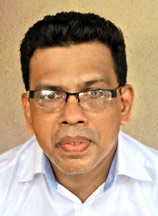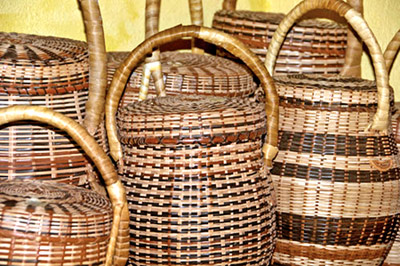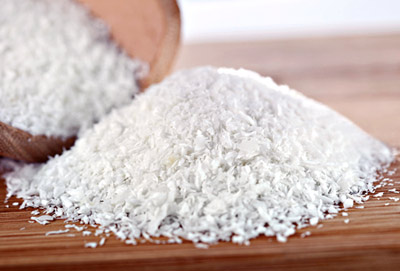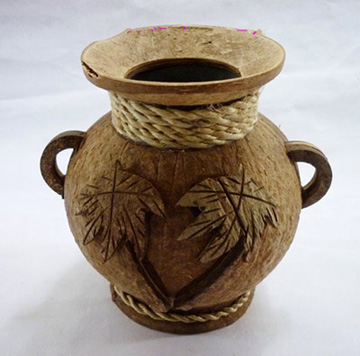Burnt coconut shells bring Rs 9.5 b in forex
By Naalir Jamaldeen
|

A coconut estate |
The Coconut Development Authority (CDA) has launched a project to
produce activated carbon using burnt coconut shell. Nearly 50 percent
coconut shell is used in the production process and Rs. 9.5 billion
foreign exchange was earned by exporting activated carbon, CDA Chairman
Aruna Gunawardane said in an interview with the Sunday Observer.
He said the sad part was that a similar percentage was going waste
every year. When the entire collection is used in the production process
the income from activated carbon can be doubled. Activated carbon is
used for various purposes such as to purify water, as raw material in
the industrial sector and for various equipment in the health sector.
“Activated carbon is also used to separate gold.
Charcoal is produced burning coconut shells and activated carbon is
produced subjecting it to a technical process, he said.
“The CDA also plans to export quality coconut products under the
brand name “Ceylon Coconut”. Then Sri Lankan coconut products will
receive an identity in the international market and genuine products
will receive a sustainable market”, he said..
The Chairman said that the Government also plans to expand the
coconut industry to the North and the East. In addition the CDA has
identified mini triangle zones covering Galle, Matara and Hambantota
districts to promote the coconut industry. Nearly 60 percent of coconut
is produced in the Kurunegala, Gampaha and Puttalam districts which is
the coconut triangle.
|

CDA Chairman Aruna Gunawardane |
The Coconut Development and Janatha Estate Development Ministry
consists of three institutions such as the Coconut Development Authority
(CDA), Coconut Cultivation Board (CCB) and Coconut Research Institute (CRI).
the Kurunegala and Chilaw Plantation Companies also come under the
purview of the Ministry.
“The CDA regulate and facilitates the industry. CCB will cultivate
coconut plants at suitable locations, providing water and fertilizer
facilities to plantations. Protecting the saplings and trees from
insects and disease are the main duties of the CCB.
“The CCB has identified new locations to cultivate coconut plants.
The coconut industry is becoming a main income earning mode after the
setting up a separate Ministry. The CRI will conduct various research in
the industry and introduce new varieties coconut seeds identical to Sri
Lanka. The CRI will carry out researches and development works in the
industry”, Gunawardane said. The Chairman said that the Kurunegala and
Chilaw plantation companies play a pivotal role in the commercial
sector. Till 2010 coconut industry was operating under the Ministry of
Plantation. President Mahinda Rajapaksa who realised the importance of
coconut industry set up the Coconut Development and Janatha Estate
Development Ministry in 2011 and commissioned it to Minister Jagath
Pushpakumara.
“Coconut is considered as the second food of people in Sri Lanka.
Coconut products are synonymous in the life of people because coconut is
used for various purposes in the day-to-day life of people.
 |
| Baskets made
from coconut leaves |
 |
| Desiccated
coconut |
 |
| Coconut water |
A large number of industries depend on coconut and coconut trees. All
parts of coconut tree is useful to man. Coconut routes, tree, coconut
leaves, eakle, tentacles, coconut husk and coconut shell can be used as
raw material in the industrial sector. Various industries depend on
coconut industry. Compared to other products coconut takes prominent
place in the human life. Coconut industry has close links with our
economy”, Gunawardane said.
“After Minister Jagath Pushpakumara assumed duties as the Minister
for coconut industry development, he drafted various mechanisms to
improve the industry and to increase income.. Local coconut has a good
demand in the international market. We have required technology and have
the capability to invest. We want to expand the industry to cater to
market needs. Expanding coconut cultivation will result in the increase
in coconut production”, the Chairman said.
“Our target is to increase foreign exchange. The Minister had various
goals to be achieved, one of them was to increase the coconut
cultivation and secondly to develop the industry”, he said.
“When Minister Jagath Pushpakumara assumed duties as Coconut
Development and Janatha Estate Development Minister the income from
coconut industry was Rs. 20 billion.
He took steps to increase the income to Rs. 60 billion by 2016. This
target was given to CRI, CDA, CCB and other private institutions which
are involved in the coconut industry. But Rs. 60 billion goal has
already been achieved. We target to increase income to Rs. 70 billion by
the end of this year”, the CDA Chairman said.
“Under instructions from Minister Pushpakumara, plans are afoot to
increase the income from the coconut industry to Rs. 100 billion by
2016. We hope to increase the income from coconut industry to US$ 1
billion by 2020. Various mechanisms have been drafted to achieve this
goal. Sri Lankan coconut products like coconut husk, coconut fibre,
shell, flesh and coconut water have a huge demand in foreign countries.
Now the people across the globe are keen to consume natural food. Due
to this a demand prevails for such products in foreign markets. Virgin
coconut oil, desiccated coconut and activated carbon from Sri Lanka have
a good market abroad. There is a huge demand for substrates made from
coconut husk in the international market”, Gunawardane said.
Sri Lankan coconut has a demand in the international market.
Technology to improve the industry is available in Sri Lanka, Raw
material is the only problem. If the raw materials which go into the
industryector are increased export income will also increase by several
folds. Last year we earned Rs. 9.7 billion from activated carbon, he
said.
“On a major scale coconut processing plants realise nearly 300,000
litres of coconut water. But nearly 60,000 to 65,000 litres of coconut
water is taken to the industry. A large quantity of coconut water is
going waste.
A large amount of money can be earned if the coconut water which is
being wasted is taken to the industry. We target to reach Rs. 100
billion income by taking the raw materials which are going waste to the
industry”, the Chairman said.
Besides, the Chairman said that many benefits can be obtained from
the coconut industry. Product diversification is crucial to achieve the
targeted goals.
If desiccated coconut was produced only Rs. 40 can be earned, but if
virgin coconut oil was produced Rs. 60 can be earned.
 |

Plate shaped lotus made from coconut shell |
In this case, production was not increased but production is
diversified.
“If virgin coconut oil was produced then coconut powder can be
produced using the poonac. Income will increase two-fold. Nearly Rs. 75
can be earned from a single coconut”, he said.
The Chairman expressed confidence that Rs. 100 billion target can be
achieved by 2015 producing by products using the coconut waste.
“Minister Pushpakumara inaugurated a program to cultivate 32 million
coconut plants.
This program was started in 2011. We hope to get benefit from new
cultivation by 2016 or 2018. We hope to increase the foreign exchange
from coconut industry to US$ 1 billion by 2020”, he said.
“The CDA is a regulating authority of the coconut industry and
performs as facilitator. Coconut based products have a demand in foreign
countries.
If the entire coconut production is used for the industry, a shortage
in for coconut consumption will arise. Due to this we have to regulate
the industry. Coconut products are exported to earn foreign exchange”,
he said.
There is a competitive environment for coconut products in the
international market. To sustain in the market depends on the quality of
the product.
A large number of countries supply coconut products to the
international market. We should supply quality products, then only a
large segment in the international market can be captured .
The quality and standard of our products should be maintained. As the
regulator we can't permit the export of low quality products. From time
to time products are subjected to quality checkup. |

